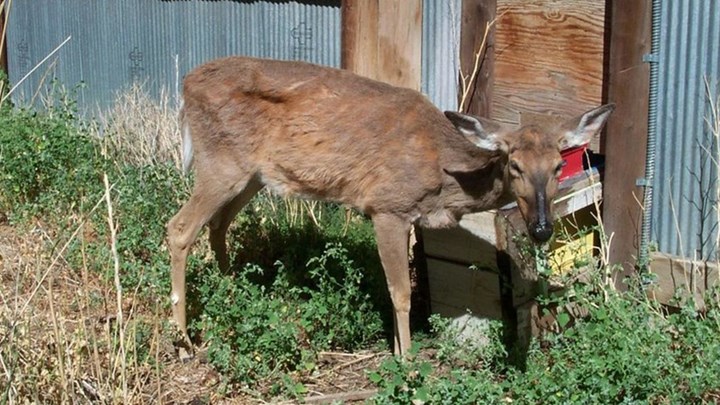
by Brian McCombie - Sunday, October 21, 2018

Chronic wasting disease (CWD) afflicts deer and elk over an ever-increasing swath of North America. Since CWD is in the same disease family as mad cow, the question has lingered among hunters and scientists: Can humans who consume CWD-infected venison come down with the always-fatal mad cow-like disease of the brain?
Newly released and peer-reviewed scientific research strongly suggests such transmission between deer and humans isn’t likely.
As the Montana newspaper the Ravalli Republic reported in April, this research was 13 years in the making and was conducted by scientists at the federally funded Rocky Mountain Laboratories (RML) in Hamilton, Mont.
“As part of that study, 14 macaque monkeys were exposed to brain matter from CWD-infected deer and elk either through direct injections into the brain or orally using feeding tubes. The last macaque was euthanized in the fall of 2016. RML researchers wrote three peer-reviewed scientific papers on the study, including the latest that was published last week in the Journal of Virology. In each paper, the scientists reported finding no sign of CWD in the macaques.”
Macaques were used because they are genetically very similar to humans. When mad cow was discovered in Britain’s cattle in the 1990s and humans there appeared to be coming down with a mad-cow-like brain disease, scientists discovered macaques could indeed contract a similar disease after exposure to mad-cow-infected beef. This was one very important piece of evidence that mad cow could, in fact, jump the species barrier and infect humans. Which means the RML research, also using macaques, suggests that CWD cannot cross the species barrier and infect people who eat meat from a CWD-infected animal.
However, one important note of caution: Similar though humans and macaques are, as one of the RML scientists who co-authored the CWD studies noted, “At the end of the day, macaque monkeys are not humans.” So, there is no way to say with 100-percent certainty that cross-species infection is impossible.
The Centers for Disease Control and state game agencies all recommend against consuming the meat from an animal known to be CWD-positive or from a deer or elk that appears to be sickly. Of course, they also recommend people do not eat meat from any animal, wild or domestic, showing signs of any sickness.
Still, this is good news in what has been a rather bleak outlook concerning CWD. As the CWD Alliance reported, “CWD was first identified as a clinical disease in captive mule deer at the Colorado Division of Wildlife Foothills Wildlife Research Facility in Fort Collins, Colorado,” in January 1967. By 1981, CWD was identified in a wild Colorado elk, and four years later also was found in a wild mule deer. According to the CWD Alliance, CWD has “been confirmed in 24 states, three Canadian provinces and two foreign countries. It has been found in free-ranging herds in 22 states and among captive cervids in 16 states.” Most recently, CWD was found for the first time in a wild whitetail deer in Mississippi in February 2018.
As the CWD Alliance explained, CWD affects only cervids (hoofed animals in the Cervidae family such as deer, elk and moose), impacting the body’s nervous system. Once in the host’s body, prions transform normal cellular protein (found in the brain) into an abnormal shape that accumulates until the cell ceases to function. Infected animals begin to lose weight, lose their appetite and develop an insatiable thirst. They tend to stay away from herds, walk in patterns, carry their head low, salivate and grind their teeth.
Current research finds that CWD is always fatal to the host cervid. As websites such as NRAHLF.org have reported, individual states have created and implemented various CWD prevention and eradication strategies for wild and fenced cervids. But as the above-mentioned RML scientist concluded, “There’s not a lot of geographic features that will stop [CWD] from spreading. We will have chronic wasting disease here for the rest of our lives.”
If the cross-species barrier to CWD holds up in future research, at least hunters won’t have to worry about this steadily spreading disease, though unfortunately this disease represents a threat to North America’s deer and elk populations.
Editor’s Note: For more information on CWD check out the following NRAHLF.org articles written by noted wildlife biologist, hunting TV host and NRA member Larry Weishuhn:
E-mail your comments/questions about this site to:
[email protected]
Proudly supported by The NRA Foundation and Friends of NRA fundraising.
